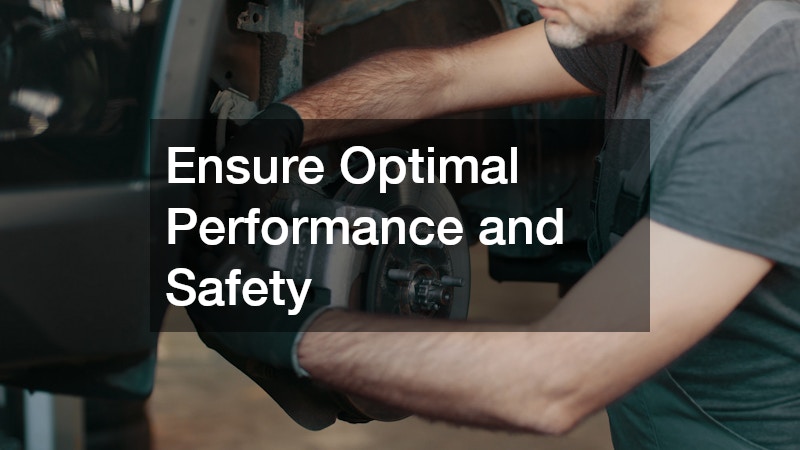Understanding brake repair is crucial for vehicle safety and performance. However, many individuals unknowingly make common mistakes when attempting to fix their brakes, often leading to further damage or costly repairs.
This article highlights the top three brake repair mistakes and how to avoid them.
Mistake #1: Ignoring Warning Signs
Recognizing Common Brake Warning Signs
Brake warning signs are the vehicle’s way of alerting you to potential issues that need immediate attention. Common indicators include squeaking or grinding noises when the brakes are applied, a spongy brake pedal, or vibration during braking. Recognizing these signs early on is crucial in preventing further damage to the brake system. It’s not uncommon for drivers to dismiss these noises as minor annoyances, but they often signal underlying problems. By addressing these signs immediately, you can avoid a decrease in braking efficiency and, in severe cases, a complete brake failure. Ensuring that any of these symptoms are evaluated by a professional promptly can save you from extensive repairs in the future.
Consequences of Ignoring Initial Warnings
Disregarding initial brake warning signs can lead to significant wear and tear on the braking components. The longer these signs are ignored, the more extensive and costly the repairs can become. For example, grinding noises often indicate that the brake pads are worn down and require immediate replacement. Failure to replace worn brake pads can result in damage to the brake rotors, which are substantially more expensive to fix. Moreover, driving with compromised brakes can severely impact vehicle safety. It increases stopping distance and can lead to accidents, especially in emergency situations, thus endangering yourself and others on the road.
Mistake #2: Using Incompatible Parts
Importance of Choosing the Right Parts
Using the right parts in brake repair is as important as the repair itself. Manufacturer-recommended parts are designed specifically for your vehicle model, ensuring compatibility and optimal performance. However, in an attempt to save money or due to lack of knowledge, some individuals opt for cheaper, incompatible parts. Such choices can lead to poor braking performance and reduced vehicle safety. Furthermore, incompatible parts may wear out faster, costing more in the long run due to more frequent replacements. Ensuring the parts used are well-suited for your vehicle can significantly enhance the longevity and performance of the brake system.
Potential Problems from Mismatched Components
Using the wrong brake components can lead to a range of issues, including uneven wear on the brake pads and rotors. This can cause a reduction in the overall effectiveness of the braking system. Mismatched components might also lead to vibrations or pulsations during braking, a clear sign that the system isn’t functioning smoothly. Additionally, the use of incompatible parts can void the vehicle’s warranty, further increasing the long-term cost and complications. Therefore, proper research and guidance are recommended when selecting brake components, as the failure to do so can compromise the safety and integrity of the vehicle.
Mistake #3: Incorrect Installation Techniques
Common Installation Errors
Incorrect installation techniques are a major pitfall during brake repairs, impacting both the performance and safety of the vehicle. Common errors include applying incorrect torque, which can either be too tight or too loose, leading to improper brake function. Moreover, misaligned brake components can cause uneven wear on brake pads and rotors. These installation mistakes often result from a lack of understanding of the specific requirements for different vehicle models. Just as important as selecting the right parts is ensuring they are installed correctly to maintain vehicle safety and performance. Attending to these details can prevent the frequent need for adjustments or further costly repairs.
Ensuring Proper Technique and Tools
Employing the right tools and following manufacturer guidelines are essential steps in achieving a proper brake installation. Vehicle manufacturers provide specific torque settings and installation procedures for a reason. It ensures that each component works seamlessly with the others, maintaining the integrity of the brake system. Careful adherence to these guidelines can prevent common installation errors and enhance braking performance. It’s advisable to consult with a professional or conduct thorough research if you are attempting a DIY repair. Understanding and applying the recommended procedures can safeguard against errors that compromise safety.
By avoiding the most common brake repair mistakes, vehicle owners can ensure optimal performance and safety. Regularly inspecting brakes, using the right parts, and employing proper installation techniques are key to maintaining effective braking systems. Investing time in understanding and addressing these aspects of brake repair can lead to a safer, more reliable driving experience and prevent costly repairs in the future.




